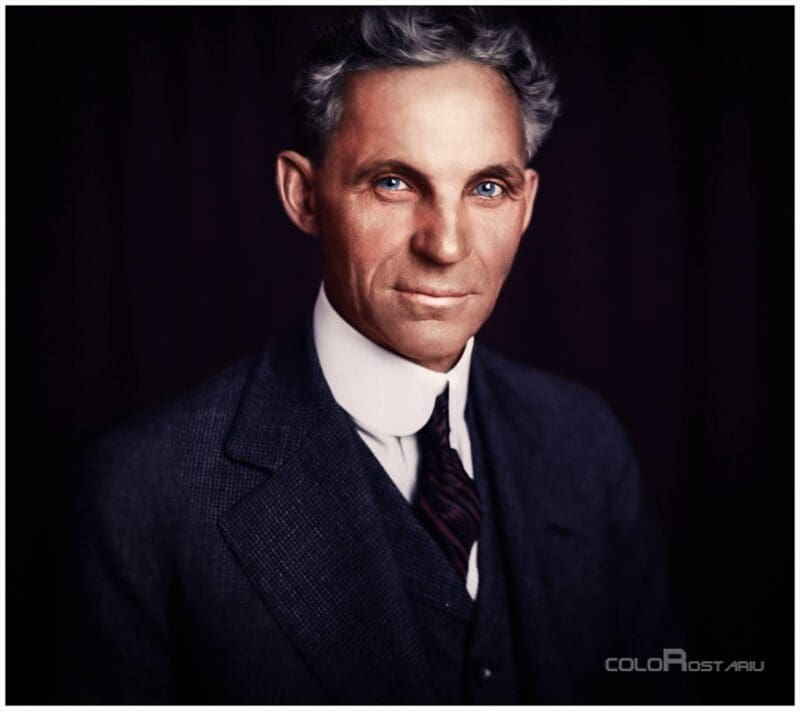Teachers often seek ways to enrich their students’ learning experiences, and there’s no denying that an interactive, hands-on approach can significantly enhance education. Thankfully, there are institutions like The Henry Ford, which recognize the vital role educators play in shaping young minds and offer support through special discounts. This initiative underscores the importance of making history and innovation accessible to teachers who can, in turn, inspire their students with the lessons drawn from America’s storied past.
Full disclosure: If you visit a link on this page and make a purchase, we may receive a small commission at no extra cost to you.
The Henry Ford, located in Dearborn, Michigan, is more than just a museum; it’s a sprawling complex of historical significance. Here, visitors can dive into America’s rich tapestry at the Henry Ford Museum of American Innovation, the outdoor Greenfield Village, the Ford Rouge Factory Tour, and the Benson Ford Research Center. The venue is a treasure trove of artifacts and experiences, showcasing the ingenuity and resourcefulness that have shaped the nation. From the legacy of automotive pioneer Henry Ford himself to the Wright brothers’ aviation breakthroughs, The Henry Ford provides a unique educational journey through the milestones of American innovation.
For teachers eager to bring a piece of this inspiring institution into their classrooms, the Henry Ford teacher discount is a fantastic opportunity. It’s straightforward to access this benefit. Educators need simply to present valid teacher identification at any of The Henry Ford’s ticket counters to receive a discount on their membership or daily admission. With these discounts, teachers can explore the vast resources of The Henry Ford at a more affordable price, allowing them to glean insights and gather material that will illuminate their lesson plans and ignite the imaginations of their students. This commitment to educators embodies the spirit of The Henry Ford – investing in those who will teach future generations to think critically and dream boldly.
Q&A
Q1: Who was Henry Ford and why is he such a significant figure in history?
A1: Henry Ford was an American industrialist and the founder of the Ford Motor Company. He revolutionized the automobile industry by introducing mass production techniques, notably the assembly line. Ford’s vision to manufacture affordable cars transformed personal transportation, making it accessible to the wider public, not just the affluent. His innovations significantly contributed to modern industrial society.
Q2: What was Henry Ford’s philosophy on work and employment?
A2: Henry Ford believed in the power of efficient labor and was a pioneer in optimizing production. He famously doubled his workers’ pay with the $5-a-day wage, reducing turnover and improving morale. Ford championed the idea that well-paid workers were also consumers, who would, in turn, contribute to economic growth. He supported the concept of shorter work hours and better wages to improve the overall quality of life for his employees.
Q3: What was the Model T and how did it change the world?
A3: The Model T, colloquially known as the “Tin Lizzie,” was a car manufactured by Ford Motor Company under Henry Ford’s direction. It was introduced in 1908 and became the first vehicle to be mass-produced using an assembly line method. The Model T made car ownership possible for many average Americans, fundamentally changing transportation, influencing urban planning, and prompting the growth of suburbs. It was a symbol of affordable mobility and freedom for the masses.
Q4: Can you discuss Henry Ford’s impact on manufacturing and the concept of the “assembly line”?
A4: Henry Ford’s assembly line was a groundbreaking shift in production. He implemented moving conveyor belts that brought automobile parts to workers, drastically reducing the assembly time per vehicle. This innovation accelerated production times, lowered costs, and increased efficiency. Ford’s use of the assembly line became a blueprint for modern manufacturing, marking a shift into the era of industrial mass production.
Q5: Did Henry Ford have any involvement in other industries or philanthropic work?
A5: Indeed, Henry Ford had interests beyond the automotive industry. He delved into aviation with the Ford Tri-Motor airplane and tried his hand in education by founding a school. His philanthropic work was extensive, including the establishment of the Ford Foundation in 1936, which is one of the world’s largest private foundations. Ford also created the Henry Ford Hospital in Detroit and was involved in agriculture, advocating for soy-based products.
Q6: What was the “Fordism” economic model, and how did it affect the society?
A6: “Fordism” refers to the system of mass production and consumption typified by the Ford Motor Company. This economic model emphasizes high wages and mass consumption, allowing workers to purchase the goods they produced. Fordism affected society by shaping modern employment practices and influencing corporate governance and workplace standards. It also contributed to the rise of the middle class and consumer culture that characterized the 20th century.






